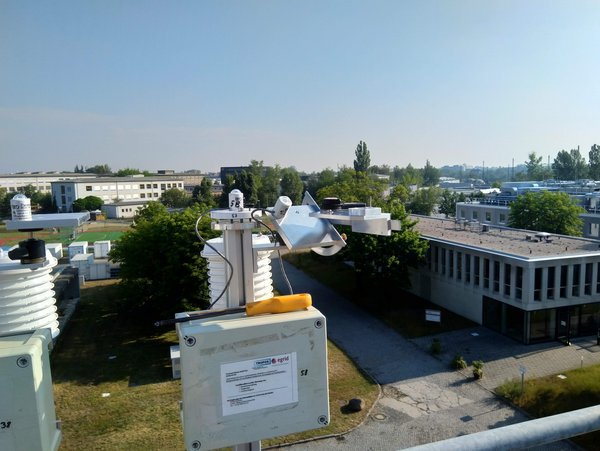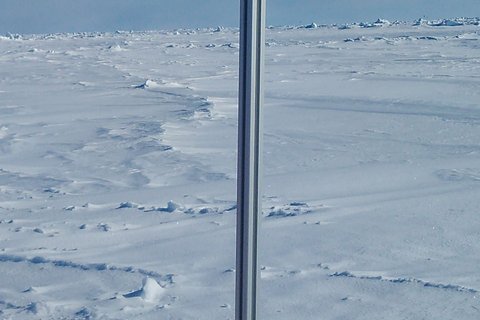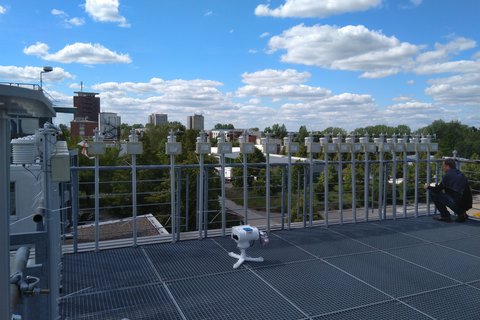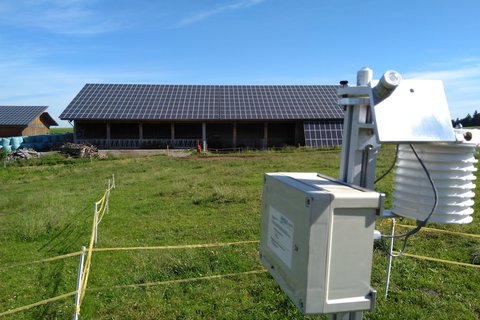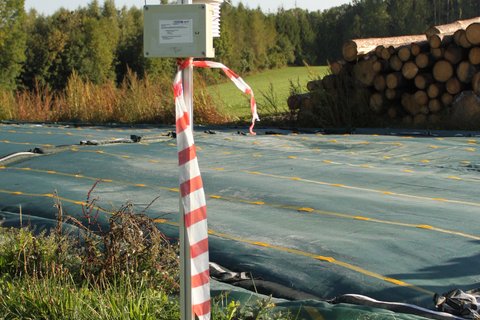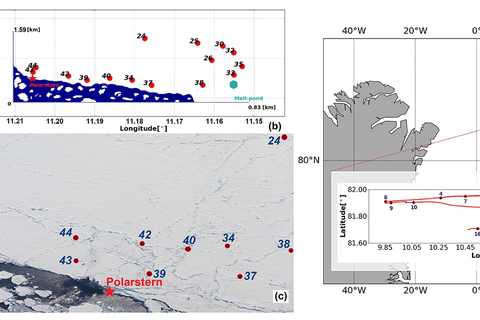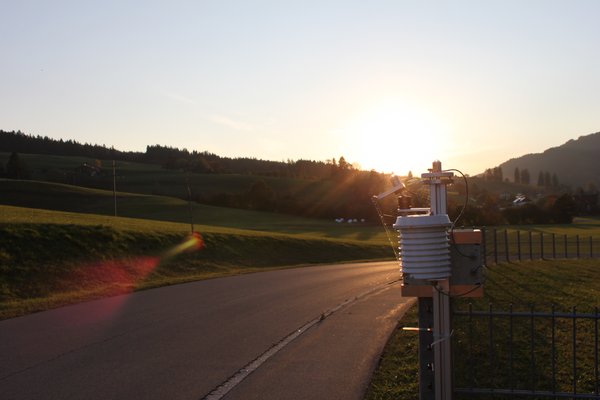
Pyranometer Network
PyrNet
The pyranometer network (PyrNet) was developed and built in 2013 in the remote sensing department of TROPOS for use in field measurement campaigns to study small-scale variability in solar irradiance. The network consists of up to 100 individual mobile stations. Each station has at least one pyranometer and one temperature and humidity sensor to measure solar irradiance and basic meteorological parameters with high temporal resolution. The individual stations can be placed individually during field measurements. This makes it possible to observe small-scale spatial and temporal variability of solar irradiance under different atmospheric conditions. Additional information of the pyranometer network can be found in Madhavan et al. (2016) and Barrientos-Velasco et al. (2020).
The pyranometer monitoring network has been used in several measurement campaigns:
-
Project HD(CP)2 2013: Jülich (area: 8x10 km); Melpitz (area: 3x3 km)
-
Cooperation with the German Weather Service IOPRAO 2014: Lindenberg Observatory
-
Field experiment MelCol 2015: Melpitz (area: 3x3 km)
-
Project (AC)³- Polarstern PASCAL cruise 2017: Ice floe in the Arctic (area: 1 km x 2 km)
-
Project MetPVNet 2018 and 2019: Kempten (Allgäu) and surroundings (area: 30x40 km)
The pyranometer network has been used to study the cloud life cycle, cloud radiative effect, and to evaluate satellite observations of cloud property retrievals.

Pyranometer station components
-
Solar global horizontal irradiance: The global horizontal irradiance is measured with a silicon photodiode pyranometer (Model: ML-020VM). The spectral response is limited to 0.3 to 1.1 μm, and is a well known constraint of this type of pyranometer, due to the narrow spectral response of the used silicon photodiode. In comparison to a secondary standard thermopile pyranometer, this sensor has a superior response time, which enables a sampling frequency of 10 Hz. This allows to record small scale variability of the solar downwelling irradiance due to changes in the sky (e.g., cloud movement). For field experiments the absolute uncertainty of the irradiance observations is expected in the range of 5 % to 10 %, depending on the atmospheric state and site conditions (e.g., soiling of the sensors between maintenance intervals, horizontal misalignment, close by structures).
-
Solar tilted irradiance: For the field measurement campaigns within the MetPVNet project, 30 stations were upgraded with a second pyranometer (model: ML-020VM). This is mounted on a movable platform, which can be precisely adjusted to a desired tilt angle with the help of a specially developed auxiliary device based on the position of the sun and/or compass and spirit level. This was used to record and evaluate the solar irradiance on various solar panel installations as part of MetPVNet project.
-
Humidity and temperature: A micromodule (Driesen&Kern DKRF 4001-P) combines air temperature and relative humidity sensors for meteorological measurements. The temperature is measured with an accuracy of about ±0.5 °C. The relative humidity is measure with an accuracy of about ±3.5 %.
-
Global Positioning System (GPS): The GPS receiver module (Fastrax UP501) provides accurate positioning information and reliable timing.
- Micro-controller Logger board: The logger board (Sparkfun Electronics Logomatic v2) is used to collect the measured data and store it to the build in SD-card socket. The firmware was customized by TROPOS and is based on a community version of the Logomatic firmware "Logomatic-Kwan v1.1".
-
Power: As power supply, a 6V 4R25-2 battery is used (e.g., VARTA Longlife Worklight). The lifetime of about 10 days enables continuous observations in maintenance intervals of usually one week.

